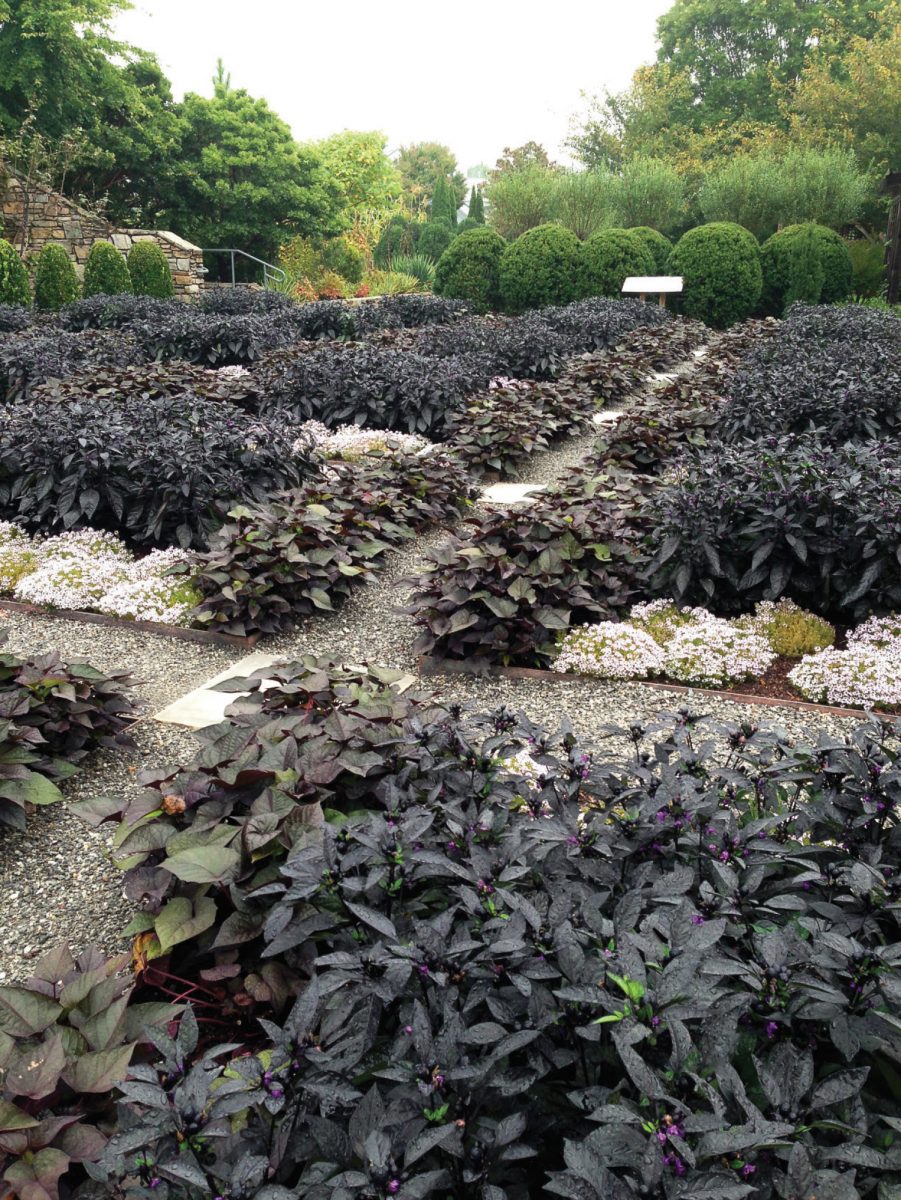
Portrait by Paul Stebner
Black flowers. They sound too dramatic to be real — shades of a Dickensian garden or an arty horror movie come to mind. And yet they are supremely au courant, rare as they are beautiful (though growing ever more common), and anchoring landscape designs and even bridal bouquets this season.
While it’s next to impossible to have truly jet-black plantings, many blooms and leaves can approach the color through saturated deep purples, reds, and greens. The look adds a certain black-tie formality to any horticultural spread.


Carolina Home + Garden spoke with Clara Curtis, senior director of Mission Delivery at the North Carolina Arboretum, about her love of saturated flowers and foliage and how and why she works them into her designs. Plantings throughout the Arboretum will highlight color theory this season, peaking in the venue’s “Covered in Color” summer celebration. Graphic garden arrangements will show how colors interact. Inky shades will provide contrast, set the mood, and add complexity.

Do you think there’s been a resurgence of black and off-black flowers recently?
Black flowers and black foliage plants have always been in vogue. But I think the difference now is that gardening has become of higher interest to the public. People are applying a sense of sophistication and interior design thought to the garden. We saw this thought [play out] when people started building outdoor kitchens, and I have recently been reading a lot about the change in interest in gardening. Seventy-four percent of all households are beginning to garden again. And you can never discount that the oddity of black flowers and black leaves have always been popular.
What are some of the most popular ones right now, though?
One I use a lot is the sweet-potato vine. Their leaves go beyond dark purple into the truly black. Another is a black mondo grass. It’s hardy, with a thin little leaf. It looks like a grass, but it’s actually in the lily family. We use it as an accent in containers, in combination with colors like chartreuse or white — all those beautiful contrasting colors. One year we did our quilt garden using black-pearl ornamental pepper — the leaves are dark purple to black and the berries of the pepper were purply-black.
There’s black bugle weed, or ajuga, and I always love black tulips. Black hellebores are popular because they’re really easy to grow and rugged — they’re in the garden a long time. Black dahlias are a deep red, and there’s a black-tip wheat that I have grown even at home. The little hairy whiskers from the wheat head are black. There’s a really dark barberry and elderberry.
Are there any black flowers you find particularly surprising or new?
I was able to go to the largest industry convention last year: Cultivate ’18 [in Columbus, Ohio]. I remember seeing a standout in the coleus — we’re trying to get one called vino that’s almost black. I’m planning to use it in container gardens in a black-and-white scheme. Our whole focus will be on color this summer. We’ll be teaching color theory through our plantings. In this case, we’ll focus on the fact that black is all colors absorbed and white is all colors reflected. I’m in the process of designing these plantings now. In this particular one, the blacks will be paired with a deep-purple salvia, a blue agastache, and a Calibrachoa Cabaret in “Coral Kiss.” The center will be a hibiscus that has a dark eye.
What are black flowers most paired with?
In addition to chartreuses and whites, you’ll find black flowers often paired with all the pastels.
Black flowers sometimes have a reputation for being moody or a little Goth, with names like black batflower or Black Cat petunias. What do you think of that?
It really depends on what you pair them with. We have grown batflower here as well. But I don’t think black flowers are always for sad or macabre settings. Black flowers and foliage hold a place of distinction in the garden — they act either as a bridge or foil. They can offset another color by providing contrast or they can make amends between colors and bridge an area where colors are jarring. Sophisticated harmonies can be achieved using black in the garden.
For more information about seasonal exhibits and permanent displays at the North Carolina Arboretum (100 Frederick Law Olmsted Way, Asheville), see ncarboretum.org.
